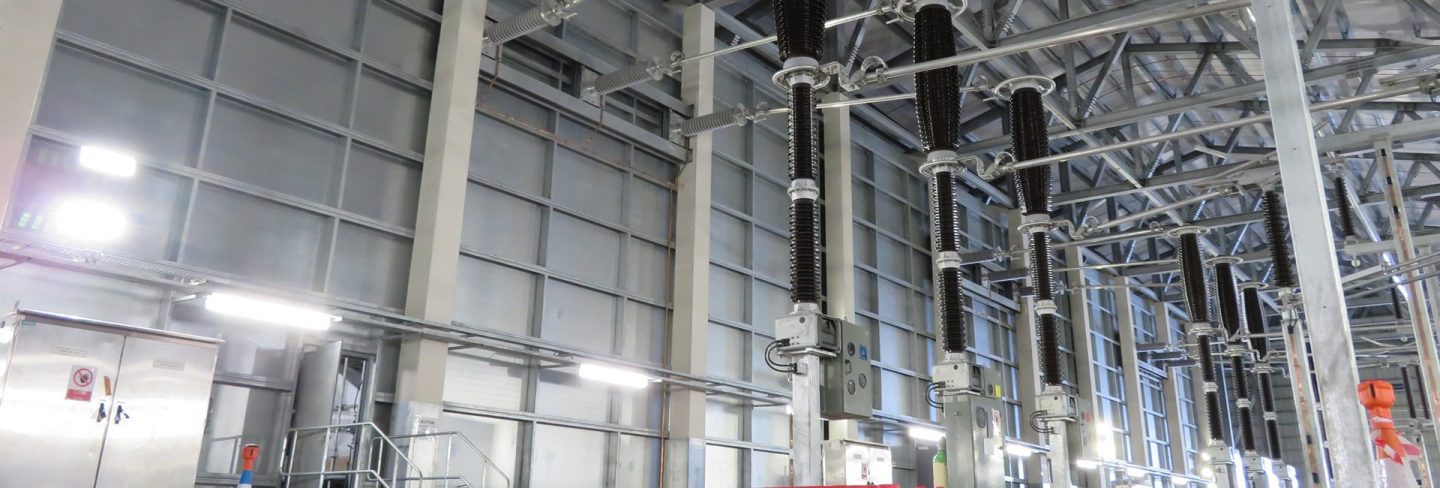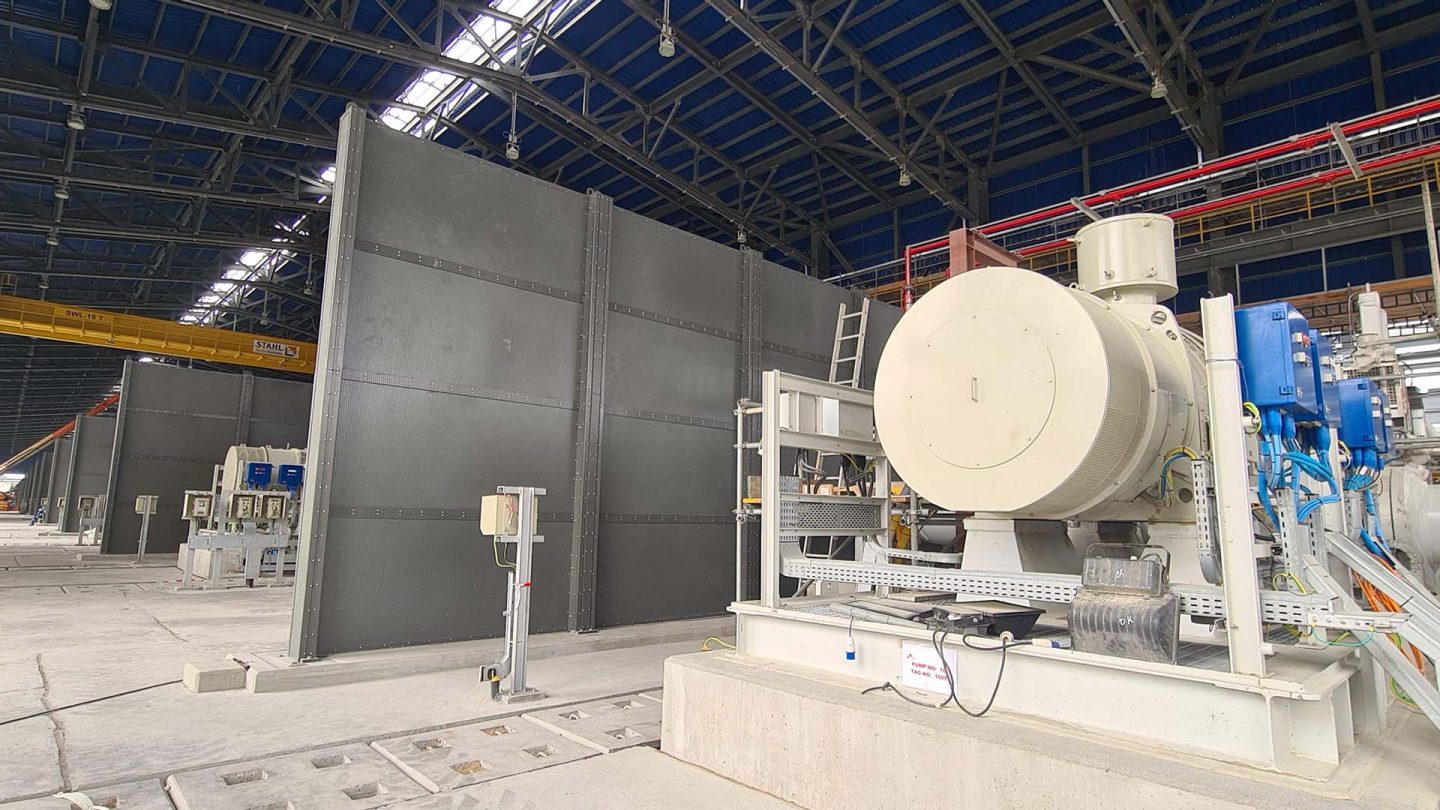For your information
You are being redirected to one of our divisional subsites which contains more detailed information on the required division. To navigate back to the main Invicta Group site, please click the link found in the footer at the bottom of the page.
- Durasteel
Discover the benefits of Durasteel
- Systems
Systems
- Expertise
Expertise
-
Applications
- Aircraft Hangar Fire Protection
- Battery Storage Facilities
- Building Fire Compartmentation
- Anti-Terrorist Blast Protection
- Cable Tunnel Fire Compartmentation
- Equipment Delivery Hatches
- Equipment Enclosures
- Heat Shields
- Power Station Fire Protection
- Metro and Rail Fire Protection
- High Voltage Cable Protection
- Substation Fire & Blast Protection
- Tunnel Fire Protection
- Oil & Gas Fire & Blast Protection
- Ventilation Systems
- Wind Farm Fire Protection
-
Applications
- Projects
- Insights
Insights
-
Articles
- Blast Protection System Design Considerations & Design Criteria
- How to Conduct a Fire Risk Assessment for Factories and Warehouses
- Minimising the Risk of Fire, Blasts & Explosions in the Middle East
- Understanding Integrity, Stability and Insulation in Passive Fire Protection
- Triangle of Fire & Active vs Passive Fire Protection
- Frequently Asked Questions
- A to Z of Terms
-
Articles
- Contact
Contact

UK +44 1843 220 256

US +1 305 328 9444

UAE +971 4 277 6225

Qatar +974 4441 4340

India +91 99 0355 9793

Malaysia +60 16 286 6225
- Start your project
What Texas’ climate catastrophe says about fire safety
14th April 2021
Fire and ice
Quick Quote
Contact Fraser Shearer Sarun Vysakham Ben Tan Azim Rizvi Anand Raghavan Our USA Office
To get a quotation or arrange a free site survey - Call Fraser Shearer Sarun Vysakham Ben Tan Azim Rizvi Anand Raghavan Our USA Office on
-
 UK
UK
-
 UAE
UAE
-
 Malaysia
Malaysia
-
 India
India
-
 Qatar
Qatar
-
 USA
USA
Current location:
Quick Quote
Contact Fraser Shearer Sarun Vysakham Ben Tan Azim Rizvi Anand Raghavan Our USA Office
-
 UK
UK
-
 UAE
UAE
-
 Malaysia
Malaysia
-
 India
India
-
 Qatar
Qatar
-
 USA
USA
Current location:
For the people of Texas, 2021 seemed to have picked up where 2020 left off. As the pandemic continued to rage, the weather caused entirely new problems, and devastated the state. Record low temperatures smothered the state in snow, and caused chaos for utilities not prepared for such conditions. Pipes bursting and power outages became common sights on social media, leaving people without warmth or even shelter.
This wouldn’t appear to have much to do with fire safety, but the two things share a common thread. The evidence is mounting that such extreme weather is becoming increasingly commonplace, and that average temperatures are rising even as freak weather events like this occur. The chaos in Texas should be a reminder of why contingencies are important – and an example of how not to prepare.
White Spring
The Texas weather crisis was part of a countrywide cold spell, with its epicentre in the normally balmy south. As much of Europe was experiencing unusual snowfall, parts of America were hitting -50 Celsius with windchill. While conditions weren’t that bad in Texas, they still had to deal with temperatures as low as -18 – breaking state records, and taking its toll on all sorts of infrastructure.
Domestic water pipes froze all over the state, causing immense property damage and leaving people without water utilities or safe homes. More critically, pipes and equipment froze all across the power grid, knocking out everything from solar and wind power to oil and gas. It quickly became evident that the problem was not that these power plants could not operate in low temperatures – as they do elsewhere – but that they simply weren’t shielded against the cold.
The outages soon became a political battleground, with state Senator Ted Cruz criticised for going on holiday during the middle of the crisis (and the pandemic), and many people blaming the issues on renewable energy. What was less keenly highlighted was how such extreme weather events are becoming more commonplace – and why states and other authorities need to rethink their weather protection.
Climate crisis
One of the unfortunate holdovers of discussion around climate change is the term ‘global warming’. The implication is that the general warming of the planet is not relevant in the context of discussions around severe cold weather, or other types of weather events, such as storms and hurricanes. While it’s true that the most obvious indicator of climate change is a rise in average temperatures, its effects are much broader than that.
One is the way that warmer oceans heighten the incidence and severity of storms. The warmer – and higher – the sea is, the more water there is that will evaporate, forming storm clouds. In the case of Texas and the rest of the US, there are a number of theories. While some 90% of extreme weather studies showed that human actions had increased their likelihood or severity, the exact science behind low temperature weather events is still up for debate.
The most common theory is that the warming of polar temperatures (due to less ice and snow, meaning less reflected sunlight) is weakening the polar jet stream, making it more easily diverted south. Another popular theory is that differences in air pressure caused by temperature changes are increasingly causing storms to track south, bringing cold temperatures with them. In either case, the main contributor is the loss of snow and ice cover in the Arctic, due to the warming of oceans worldwide.
You’re never ‘too safe’
The important point is that there is a huge amount of evidence that extreme weather events – both cold and hot – are linked to climate change. We’ve seen this play out in real time, with many countries seeing record high temperatures in just the last few years. Wildfires such as in California and across Australia have been the most destructive on record, while hurricanes and tsunamis have occurred in greater frequency in the US and Asia.
On one level, this is an issue for governments to legislate on, and provide greater protection to everyone from extreme weather events, as well as continuing to battle climate change. However, the ongoing politicisation of this issue means that action is not always forthcoming, and threats remain unaddressed. As such, the onus falls on businesses to be prepared for every eventuality, even ones which would not normally occur to you.
Two examples from the energy industries in the UK and Japan are fantastic examples of this mindset. Yanosuke Hirai was an engineer involved in the design of the Onagawa Nuclear Power Plant, who insisted upon 14m tall seawalls after seeing water markers up in nearby mountains, showing the levels previous tsunamis had reached. This decision would go on to protect the plant from a disaster similar to that at Fukushima, despite being closer to the epicentre of the 2011 earthquake.
In the UK, engineer and Nobel Prize-winning physicist John Cockcroft was chastised for his insistence upon building two large chimney stacks over the reactors at Windscale power plant, after reports that uranium oxide had contaminated nearby land at a similar plant. The stacks were considered an eyesore, and were derided as ‘Cockcroft’s Folly’ after they were deemed unnecessary – until a reactor fire in 1957, when they prevented a devastating release of radioactive material.
—
This level of preparation looks good in the history books, but it’s also a reminder of the value of sticking to procedure, and following through on safety concerns. Too often, potential problems are not dealt with because they are considered unlikely to happen. But to some extent, that’s the point of safety regulations: to consider every possible point of failure, and implement reasonable contingencies. Those men were acting on the knowledge they had, but they had to fight to overturn a negative safety culture.
This is as true for fire safety as anything else – and never more so than the present day. We’ve seen with the spate of major wildfires over the past few years that fire safety is as much a growing concern as flooding or hurricanes. Increasingly long, dry summers are raising the incidence of wildfires all around the world, with thousands occurring in the UK every year – most of which don’t reach the news. But increasing temperatures also put things like chemical storage at risk, and create potential ignition points in and around buildings.
Whether it’s a tsunami, a freak cold spell or a sudden flash flood, extreme weather events do not appear likely until they actually happen. This is not a reason not to plan for them, and to put adequate protection in place. The stories from Texas and elsewhere around the world should remind us all that the climate is changing in unpredictable ways – and changing our approach to safety with it.
Accreditations & Affiliations











SpecUp - System Specification Wizard
Answer the 5 short questions below to receive your recommended Durasteel system specifications. Hover over the ? icons for a brief explanation.
Question 1/5
Type of system required?
Question 2/5
Fire rating required?
Question 3/5
Fire integrity-only or integrity and insulation?
Question 4/5
Fire attack risk from one side or both sides of the system?
Question 5/5
Blast rating required in addition to fire rating?
Creating your results page
Thanks for completing the SpecUp, you’ll be redirected to your results shortly.
Click here if you aren't redirected after a few secondsStart your project
Tell us about your project. Please complete this form. One of our sales team will come back to you with more details. If you prefer, you can drop us an email.




Share/Like this page